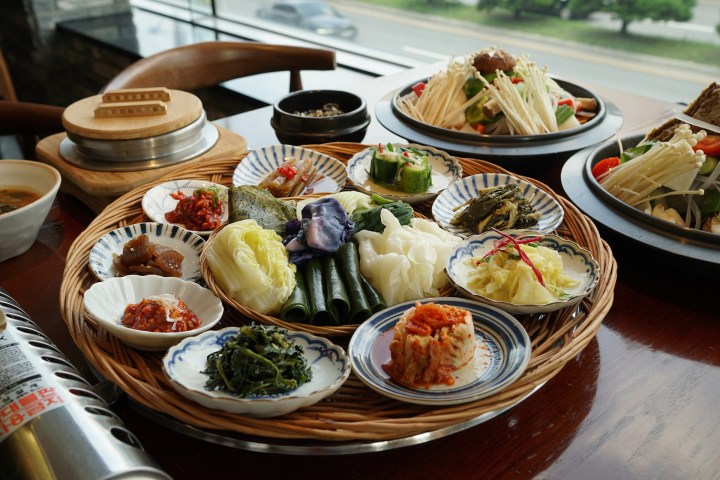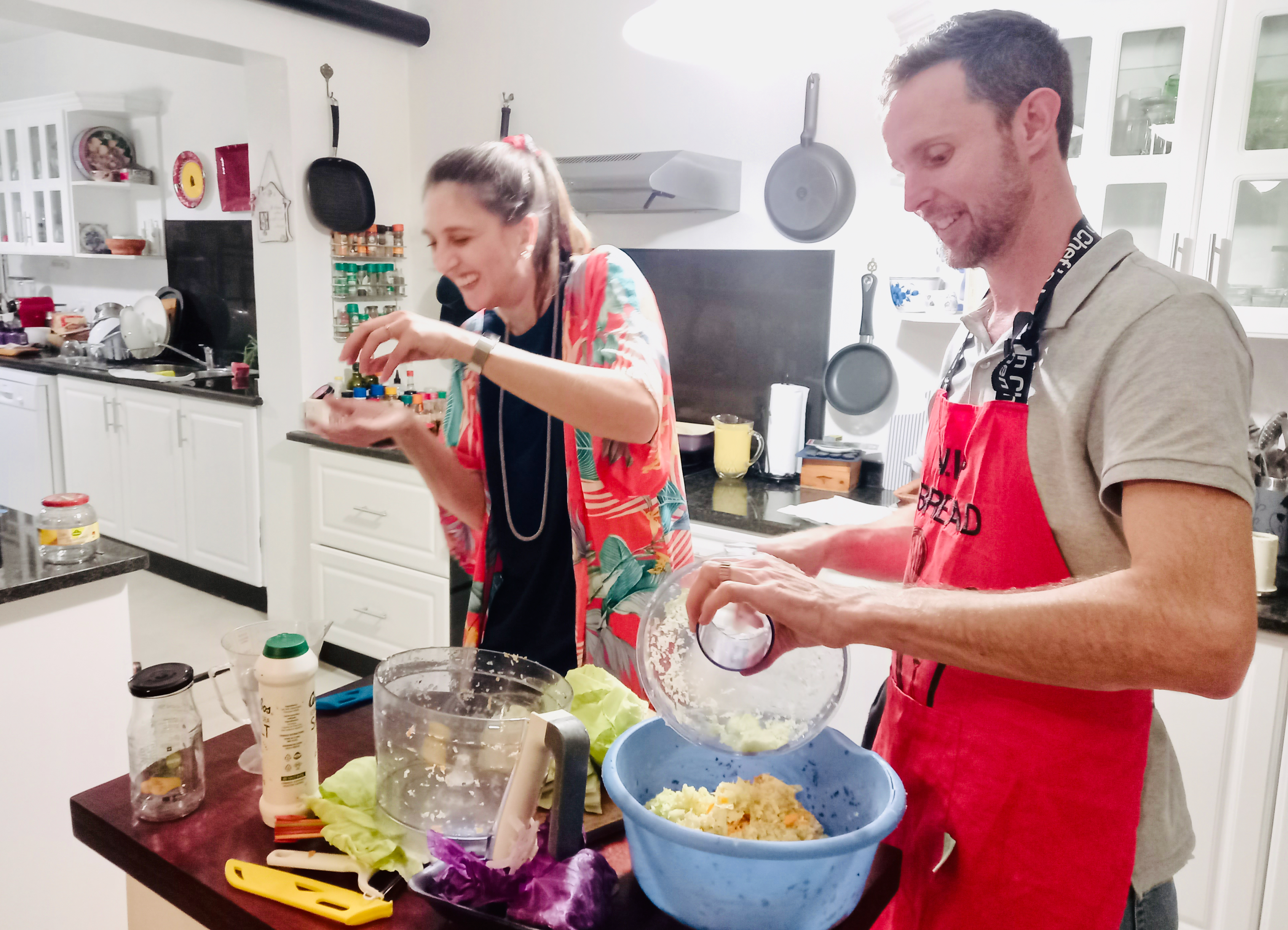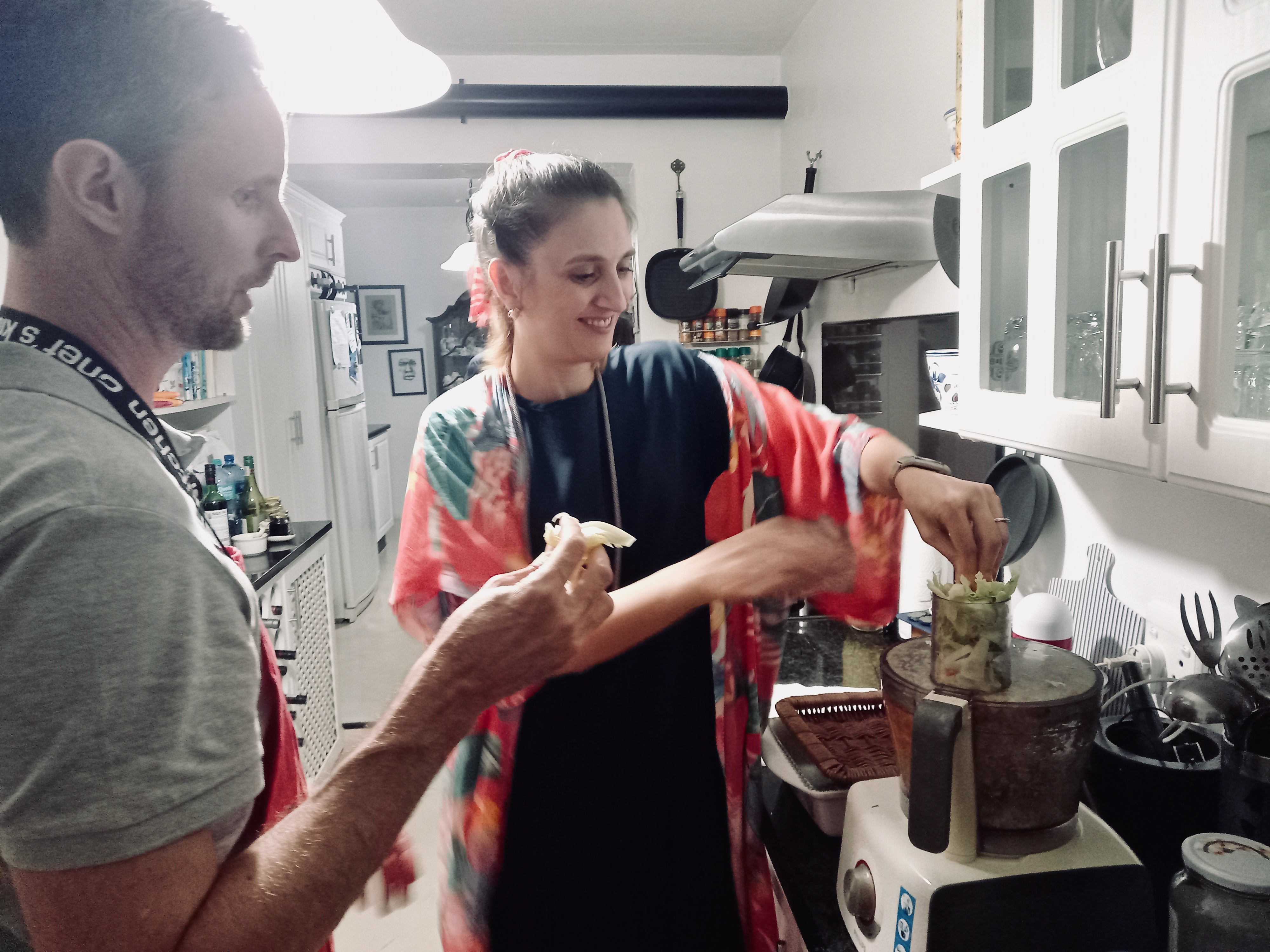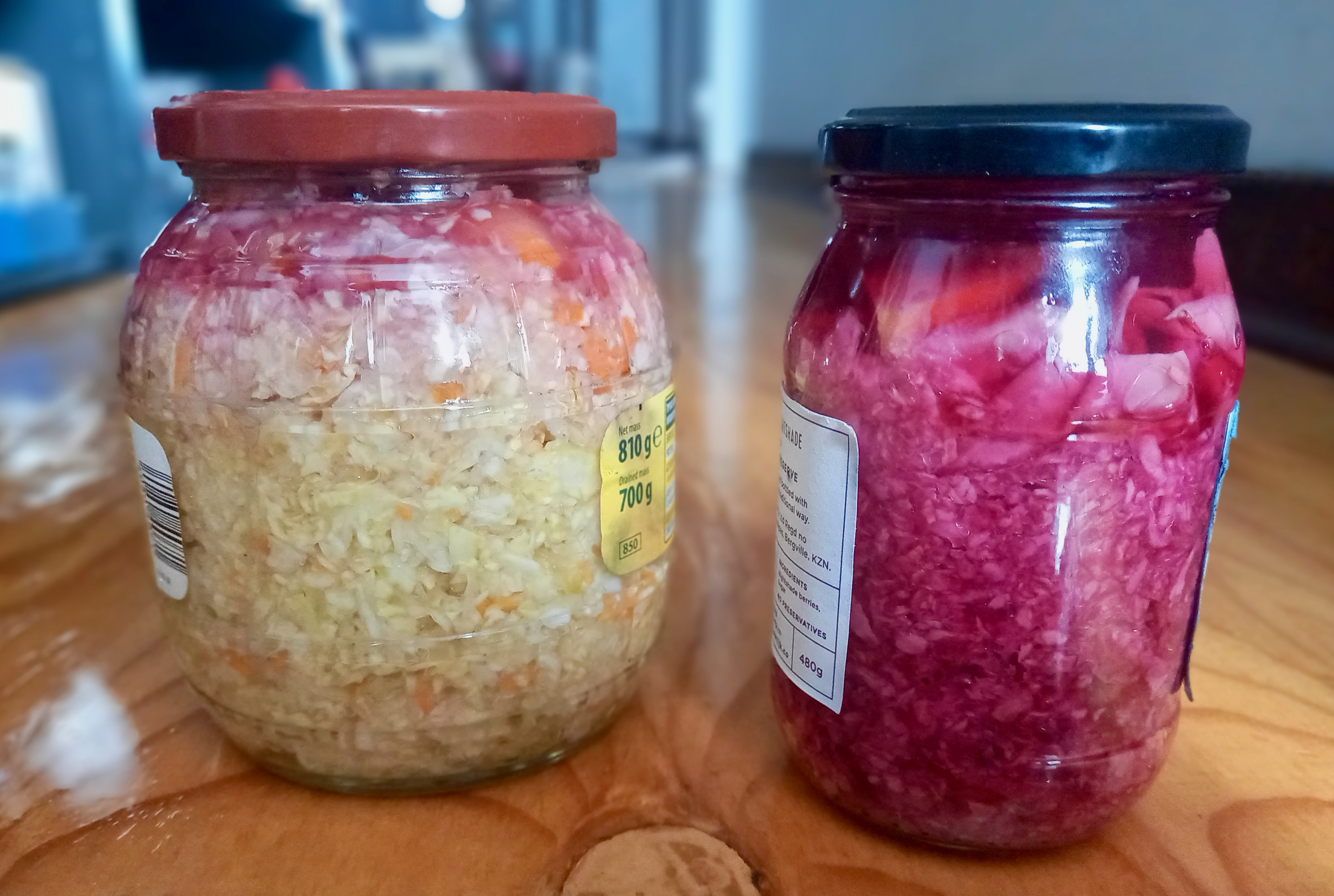RISING HOPE
Fermenting foods, cementing friendships, cabbages and kraut

A death. An orchid. Next thing we are around a table sharing an experience. With dinner parties back and as we refine the art of living with Covid, it’s time to resuscitate interconnection, reinvigorate creativity around food and reclaim culinary community.
The entry, wrote the great AA Gill, for cabbage in Larousse Gastronomique starts with the heavenly sentence: “The cabbage seems to have been unknown to the Hebrews. It is not mentioned in the Bible.” I love that – so French. Just the slightest note of disappointment with God; just the merest raised eyebrow and pursed Gallic lip. You can imagine a French chef in confession: “Bless me Father, for I have sinned – but I am not the only one: God left cabbages out of the Bible.”
Thank you, AA Gill, intolerant fearless food writer extraordinaire, for these cabbage profundities (profanities?), which open his 1994 essay on cabbage. Cabbage, which has kick-started my long-time hankering to ferment. In my kitchen. Carrots. Radishes. Green beans. Beetroot. Tomatoes. Cauliflower. Onions. Garlic. I keep seeing more options on a Facebook group called Fermenting for Beginners, my fave from among many, given the support and ideas offered and the patience with newbies, which is a group rule.
Back to that cabbage. More specifically, sauerkraut and the how-to lessons delivered, at the dinner table, two weeks after two passionate fermenters came to offer condolences and bring an orchid for a recently widowed friend. I was there at the time. Others were there. We all got talking. Sourdough. Sauerkraut. How about a sweet counterbalance? And so the gift of sharing was planned.
The conviviality and warmth of the evening that ensued brought to mind the many stories I’ve read on how Covid has cut people off, physically, psychologically, emotionally. So much loss at so many levels. Time to start looking for creative ways to get back together.
So I offer this story both as a just-do-it resource for others who might have considered fermenting. And hey, isn’t it great to have a dinner party theme? You don’t have to like the company to enjoy yourself if there is a theme. You don’t have to feign polite interest. You don’t have to arrive prepared to be “on”. You go home fed at many levels.
Once upon a time in another life in California, a group of us who all liked to cook and eat and drink wine and I guess got bored quickly with trivia, devised a plan. We had established that none of us ever wanted to join a book group. But hey, with The New Yorker, Vanity Fair, Esquire, Wired and other mags all cheap as chips to subscribe to, we called ourselves The Intellectuals, precisely because we were not, and met monthly for a couple of years to share, round the table and invariably over great nosh prepped by whoever’s turn it was to host, an article we’d read that took our fancy. Cool discussions, reflections and debates invariably ensued. No boring talk of children or insignificant others, of our work and those other mundane-to-others facets of our lives. So hey, that is just one of infinite possibilities.
Back to the cabbages. My dad, being Polish, used to make sauerkraut – and called it sauerkraut, not kapusta kiszona, which I read is the Polish name – so I grew up eating it. As with anything else that happened in the kitchen where he was master chef, if I asked for a recipe, he would grunt “come watch me”. Which he knew I wouldn’t. And of course I didn’t. Because isn’t it fact that when you’re young so many things involving parents seem an irritating waste of time until: one day. And they’re gone.
Perhaps deeper than coincidence, while for years I have been told fermenting is easy and yes, know there are lessons – on everything – on YouTube, I figure I must have been wanting, waiting, for that lost opportunity to “come watch”. Somebody making sauerkraut. In action, in the kitchen.

Fermentation station: Brad Wills and Gabi Wills show how its done. (Photo: Wanda Hennig)
The dinner party invite lands in my email midweek. It is expected, given the orchid encounter at Linda’s, who has by far the best table to gather at so gatherings happen at her place most Fridays. The message says Brad Wills will bake sourdough rolls (which he’ll bring oven-ready) and talk about fermented foods while we consume fermented drinks, aka, our BYO wine. “Menu is Kassler (with Cheryl’s sauce), bratwurst (Linda buy), bratkartoffeln (Linda make, though Sal wants latkes), salad (Moira). Brad’s (and Gabi’s) sauerkraut is the centre piece.”
They will bring the chopping board, the mixing bowl, the knife, the cabbages. “Ethekwini will hopefully supply the water.” No joke. One lives in hope, not expectation, of such things in Durban. If we want to leave with our own “festering sauerkraut”, we should bring empty 400-800 g glass jars; peanut butter bottles good. ETA about 5.30pm.
So, Brad Wills: chemical engineer with biochemical credentials turned management consultant, data scientist and leadership guru. If you check him out on Linkedin you’ll find him cradling two loaves of bread. This above pictures of people sharing food from a laden table and the hashtag #bakerswednesday, these being office lunches, happening for six years and counting. He is assisted by Gabi Wills, PhD, researcher, education economist and his spouse.
Brad is happy to report, with a chuckle, that his dad’s first grandchild was Alfred the sourdough starter, named for Port Alfred where he/she/they was/were created. Sjoe. Where does one begin on the sourdough gender scale? Brad, who tells us in a little more detail than this, that “you just mix flour and water and leave it out… the enzymes go to work… it’s quite magical”, has a birthday party for Alfred on August 9 each year. “You become attached.”
How Brad got into fermentation started with a yearning “to find something tangible that I could create”. You sit at a computer, he says, and – don’t we know it? – live in your head. “I wanted to find something, do something, so I could say, ‘this is what I make’.” He was exploring. Didn’t expect whatever it was to involve food. Although with hindsight he can see his mom, via her cooking, had whet his appetite.
He found what he was looking for, “or you could say it found me”, 11 years ago. “Gabi and I were at the Grahamstown Festival. We went past a pizza stand.” The dough intrigued him. Conversation ensued, which went something like:
“What’s this?”
“Sourdough!”
“Sour what?”
He went off and googled. And right away, “I knew, that’s my thing.”
He started experimenting. With bread first, his passion, before his broader adventures in fermentation began. Bread, from the starter (aka Alfred) to loaves. The biochemist in him finding it fascinating, figuring things out; building a clearer and clearer picture at a microscopic level.
Meanwhile, baking and giving bread to family, friends and clients. Making tweaks after hearing things like, “great flavour but it’s going to nuke some teeth!”
People started asking him for his bread. Wanting to buy his loaves. “You couldn’t pay me enough,” he’d tell them. But, “I will give you bread. And I will teach you how to make it.” He taught them at his house and theirs’. Took a wooden-handled dough scraper with a scraping of dried starter to his sister in Australia. Within 24 hours of adding flour and water, Australian Alfred was bubbling for her.
One Wednesday lunchtime at work, “We had an office oven,” he told people to bring nosh to eat with bread, took some loaves, and gave a how-to lesson for people to make their own. After that first time, he heard “again please”, over and over. And so the tradition of #bakerswednesday was born.

In tandem, Brad Wills and Dr Wills shred the cabbage pending bottling. (Photo: Wanda Hennig)
“Sourdough, I feel I have perfected. I’ve done it so many times,” he tells the eight of us assembled at Linda’s, snacking on sourdough crackers brought by Brad, peppering him with questions, appreciating the aroma of his sourdough rolls gently rising in Linda’s oven. “Sauerkraut, I feel I could do better. Eight out of 10 times, I get it right,” he says as he sets up to teach us “the easiest way to make sauerkraut, using what one is likely to have at hand”.
An anaerobic fermentation, “which means without oxygen, is what you’re doing”. We have to be sure our cabbage stays submerged. If mould grows, we’ll need to toss it. We could be putting in bay leaves and other things. Lots of scope for sauerkrauts to come.
So Brad and Gabi are in the kitchen at Linda’s with cabbages, white (green) and red (purple). With each cabbage Brad removes and keeps a couple of outer leaves then cuts the whole into quarters, removes the core, then weighs said cabbage on a scale he’s brought. This, to gauge the salt needed. “You find the concentration of salt needs to be between 2 and 3 percent. I aim at 2½% cabbage-weight mass.” Simply, for every 200g of cabbage, 1 tsp of salt. Any salt. Any water.
And a little extra salt to create the brine as the cabbage likely won’t expel enough water to fill the bottle.
While we can, at home, slice our cabbages, they are going to shred, using their food processor. Quicker and easier and also, the cabbage being shred-thin, there are more sides and more surface area for the salt to create its alchemy.
The shredded cabbage goes into a bowl. The measured salt is sprinkled on, mixed in by hand. “Let’s leave it for 20 minutes for the sake of the process,” he says, meanwhile kind of kneading and squeezing the cabbage so its juices start to expel.
After the 20 minutes, during which time more questions asked and answered, he stuffs our bottles with the shredded cabbage and the liquid that has been dispelled, tears and cuts the outer cabbage leaves to squash in on top to create a covering so bits don’t float up, then shows us how to slice carrots to fit in over the cabbage leaves, wedging the carrot slices under the bulge of the bottles to hold our sauerkraut-to-be in place. “Now we’re going to literally immerse our cabbage in brine, that is salt and water, and you’re done,” he says, filling our bottles to the top from his little measuring jug. Then securing the lids.
“Stand them in a bowl with sides at home, to catch any liquid that is expelled. You can just rinse the bottle and the bowl. Leave for two weeks, though four is better. Up to three or four months out of the fridge is fine.” Longer for more flavour, more probiotics. Once opened, we should put it in the fridge.

The fruits of our fermentation mutating in recycled bottles in my kitchen. (Photo: Wanda Hennig)
The fruits of our April Fool’s Day dinner show-and-tell are alive and mutating in their recycled screw-top bottles on a low shelf in my kitchen. Their presence lead me to page 71 of a book, Polish Culinary Paths, (you can skim through a PDF of the book here), given to me in 2016 in Warsaw by author, Magdalena Tomaszewska-Bolałek, a food anthropologist and academic (and friend, too, now that we’ve met twice in Poland and keep in touch in between).
She writes there about the long history of fermenting cabbage in Poland. How in rural areas, after harvest, communities would gather to prepare the cabbage for fermentation in large wooden barrels. The chopping, salting and layering: with cumin seeds, horseradish roots, apples and cherry tree leaves… “Preparations of the sauerkraut accompanied by singing were a joyful time,” she writes.
My picture of this convivial scene prompts me to message her and tell her about our sauerkraut evening. That we are back having dinner parties here. In-person foodie evenings with friends. A far cry from the Zoom culinary adventures kitchen-to-kitchen (see Online cooking experiences, from Bo-Kaap to Anywhere) of early Covid lockdown.
“The manifestation of tradition and roots for many people in Poland is fermented food,” she writes back. “It is an ancient preserving technique here, known since Slavic time (from the end of 5th-century). Crunchy cucumber, sauerkraut and fermented tomatoes are good snacks and ingredients for soups and dishes. My favourite is cucumber soup (of course, made from fermented cucumbers with a considerable amount of cream: śmietana).”
And yes, she affirms. “Cooking is very sensual. It is about smell, taste, touch and sharing it all with others. You cook together, you laugh and talk. After the pandemic, according to research, many people feel lonely and have problems with social life. We need things that will bond us again and cooking with friends is a good example.”
She continues, as I thought she might, to talk about Putin’s war on Ukraine.
“Many women and children have had to run away from their homes, just to try and be safe. Polish people are supporting them in various ways, also by providing food. So cooking is also about caring. Food made with emotions can help to heal your soul.”
Journeying back to AA Gill’s 1994 essay on the cabbage, to his ending this time.
“Cabbage, they say, is at the centre of the Russian soul,” Gill writes. “Just as New York is the Big Apple, Moscow is now the Big Cabbage. A businessman I once met told me it was called that because it has many layers, a hard heart and is full of wind.” Lamentably a hurricane of devastation right now. DM/TGIFood
For resources and more on sourdough from Brad Wills, visit Hope Rising. And from an off-the-grid YouTube channel, for newbie fermenters: How to Ferment Carrots for Beginners.
Follow Wanda Hennig on Instagram @wanda_hennig





 Become an Insider
Become an Insider
Comments - Please login in order to comment.